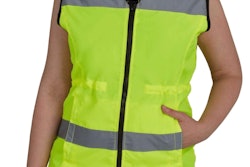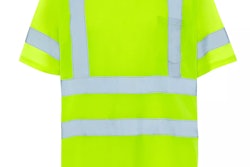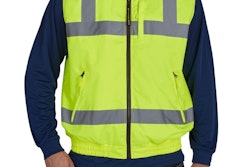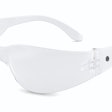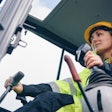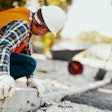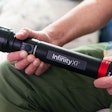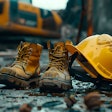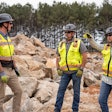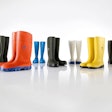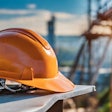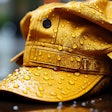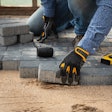
According to the United States Department of Labor Occupational Health and Safety Administration (OSHA), one in four ‘struck by vehicle’ deaths involve construction workers, more than any other occupation. Approximately 75 percent of struck-by fatalities involve heavy equipment such as trucks or cranes.
Citing Construction Research & Training, OSHA notes that from 2011 to 2015, 57 percent of the struck-by vehicle deaths happened at the work place because of not wearing safety vests.
One way construction workers can avoid such potential outcomes is to be highly visible in all levels of light.
Why It's Important
Scientific literature shows that the attention of humans, like animals in nature, is captured in certain ways by specific colors. Humans are wired from past associations to react with caution in the present time to a red stop sign or red traffic light, for example.
OSHA mandates the use of fluorescent colors such as safety green and safety orange for employee safety. The two colors also are compliant with American National Standards Institute (ANSI) guidelines: ANSI/ISEA 107-2020: High-Visibility Safety Apparel.
High visibility safety vests are a critical Personal Protective Equipment (PPE) component on a jobsite, alerting drivers and other vehicle operators of a worker’s presence, especially in low light and dark conditions.
Studies have shown that high visibility safety vests are visible from the furthest distance as compared to normal dyed clothes.
The best color choice achieves the highest degree of worker contrast to the environment. Those in charge of worksite safety assessments can help determine hazards and the appropriate color to choose.
Benefits of Green and Orange Vests
With a light source such as headlights from a vehicle or machine, retroreflective material has a similar quality to bright colors in that it attracts notice by reflecting the light back.
Addressing the science behind that, the U.S. Department of Transportation Federal Highway Administration notes that there are three types of in-conspicuity affecting pedestrians, among others, with construction workers essentially being ‘pedestrians’ on a worksite such as road construction.
Those three factors include being an invisible object – blending into the background; being obstructed by another object, and being a visible object not seen, such as being hidden by shadows, glare, or other conditions.
High-visibility safety vests enable construction workers to be seen from further distances, including in low light and poor visibility, and especially when working around other moving vehicles such as cars, trucks and machinery traveling under its own power.
Another benefit: workers are always visible and can be more easily identified from afar when required by other workers.
The Canadian Centre for Occupational Health and Safety (CCOHS) notes that stripes of colors that contrast with the background material can provide increased visibility. Stripes on the arms and legs also provide visual clues about the motion of the person wearing the garment, the agency adds.
Orange and green are dyed to achieve fluorescent factors and offer a sharp contrast with the work background.
How to Choose a Color
Choosing green or orange comes down to assessing the work environment to see which color provides the greatest contract in the work environment.
Green high-visibility vests can provide excellent visibility in a variety of lighting conditions such as daylight, low-light, minimal artificial lighting, or at dawn or dusk.
High-visibility green worn on road projects helps the worker stand out from among the orange cones and barriers. With machinery on construction sites painted orange, green vests provide contrast and increased visibility.
In urban environments, green may help workers stand out against a black or gray roadway, but in a green or natural background may blend in and not provide contrast.
Safety green is more visible than orange and is considered suitable for construction sites with multifaceted backgrounds that may include heavy machinery and high-rising structures.
Green has a 70 percent luminance factor, providing higher visibility and detection of the color by the eye.
Orange has a 40 percent luminance factor. The color is highly visible in daylight. In environments where there is a mix of workers, vehicles, and equipment, orange helps workers stand out. Orange stands out in most backgrounds and can be suitable for rural and urban areas.
The bottom line: wearing high-visibility vests promotes safety, which in turn retains productivity. That – and fewer accidents – ultimately results in cost savings.
